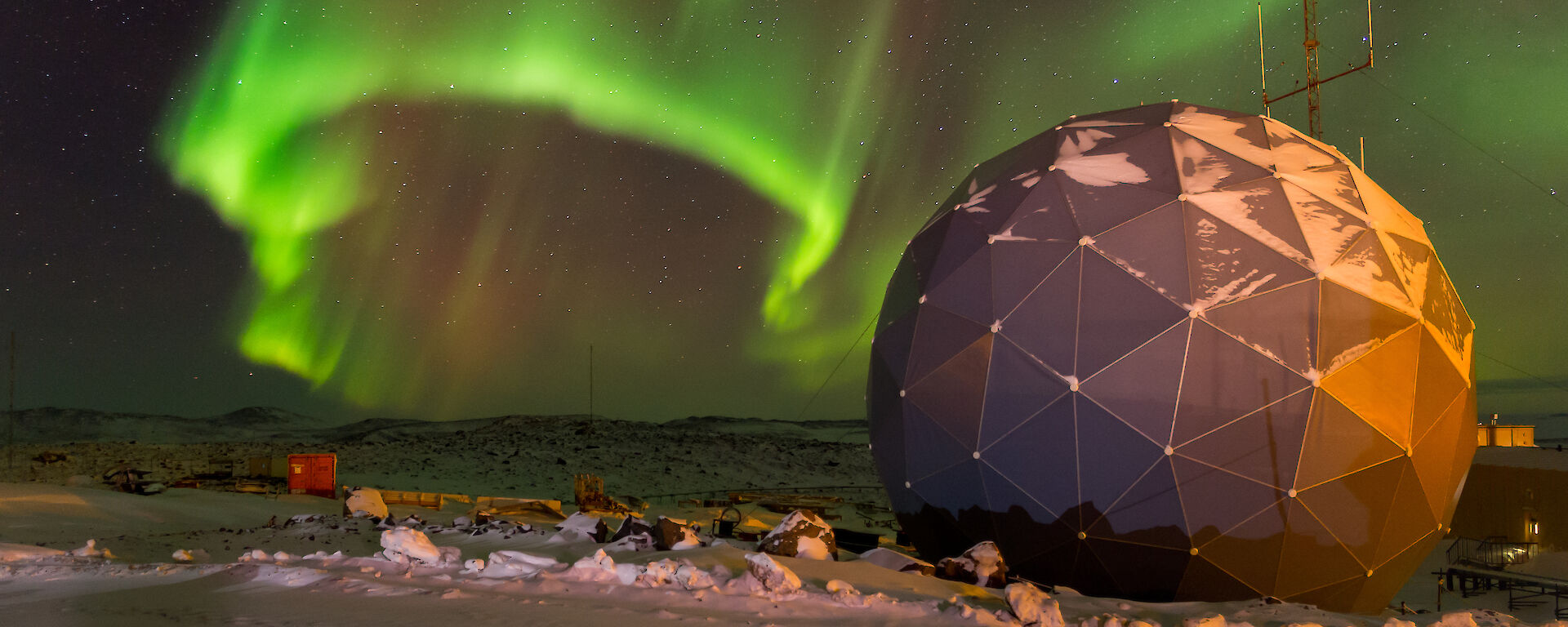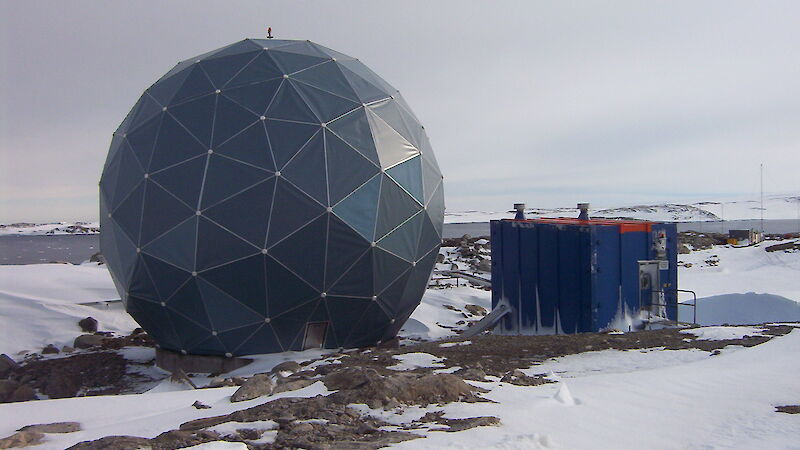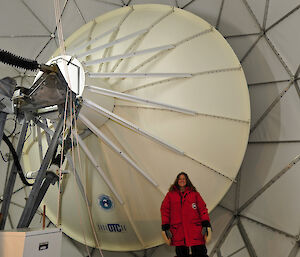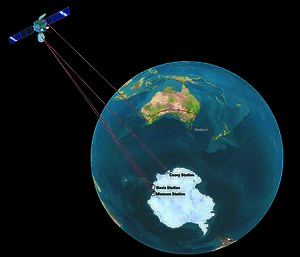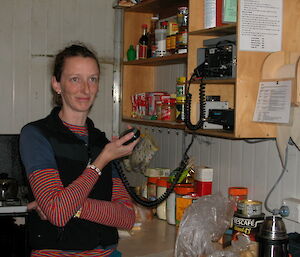Satellites revolutionised communications in the Antarctic. Inmarsat was introduced in the mid 1980. This signalled the end of High Frequency (HF) radio as the primary mode of communication with Australia. Inmarsat was closely followed by ANARESAT. This network uses Intelsat geostationary satellites to provide a permanent telecommunication link between Australia and the stations.
In March 1987, the first ANARESAT 7.3 m dish antenna established a link at Davis station. This was followed by Australia’s other stations in 1988.
Initially, ANARESAT operated one phone line and one modem line of 4800 bps (bits per second). Compared to the radphone, the clarity of the phone line was incredible. It made voice-to-voice communication accessible and reliable. In 1992, a digital data service replaced the analogue modem line, increasing data capacity to 64 Kbps (kilobits per second).
Satellites have made life on station much more comfortable for expeditioners. They can now contact their friends and family with ease.
Satellite data connections have also allowed researchers to collaborate. Large amounts of scientific data can be collected and sent to researchers in Australia. Cosmic ray data, once sent manually by telex tape, is now sent continuously 24 hours a day. Meteorological data is sent every minute from automatic weather stations. Forecasters at stations receive the latest live data modelling from Australia.
Communications have also improved for expeditioners at field camps and on resupply ships. Mobile satellite systems provide phone and email services to expeditioners travelling by ship. Images of ice conditions can be received on board ships from several satellites. When the ship is unloading at a station, it is connected to the ANARESAT system by a microwave link.
A similar link enables scientific data to be sent from remote penguin monitoring sites. It also provides Voice over Internet Protocol (VoIP) phone and email communication.

